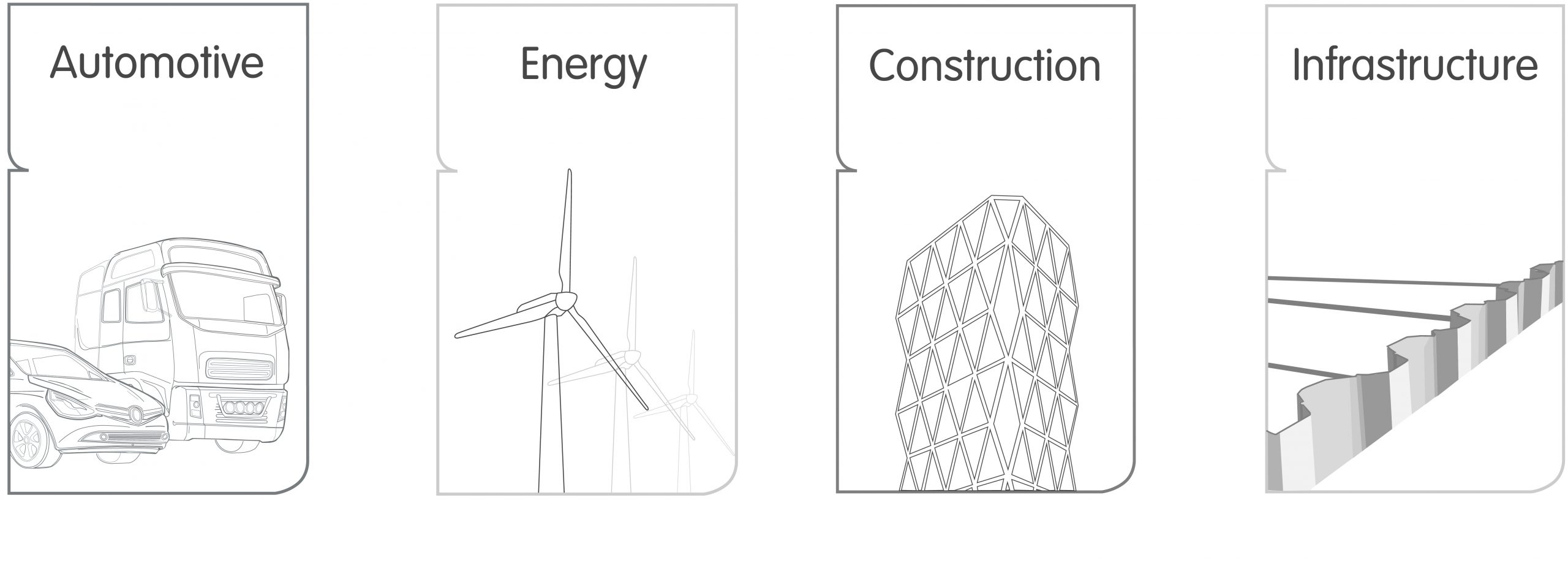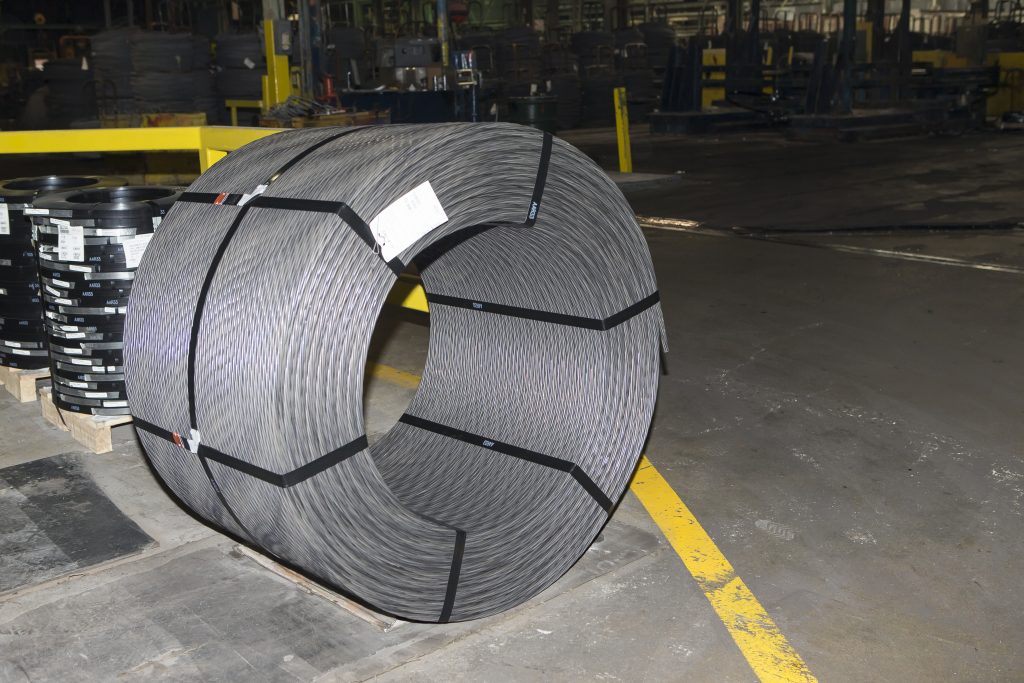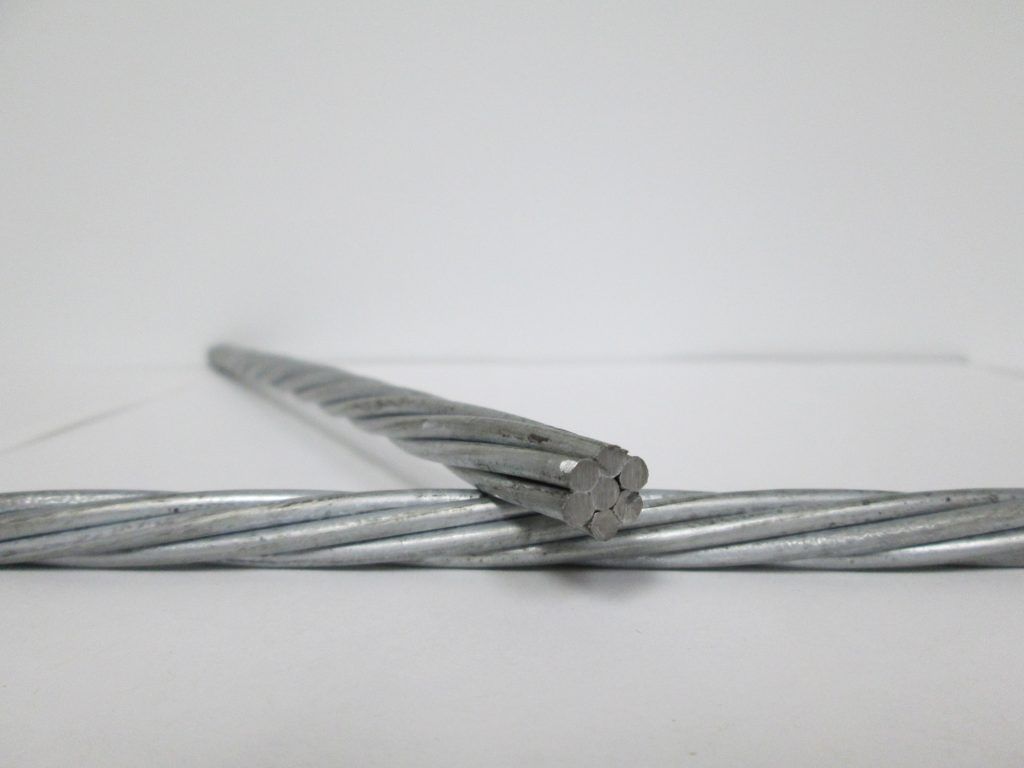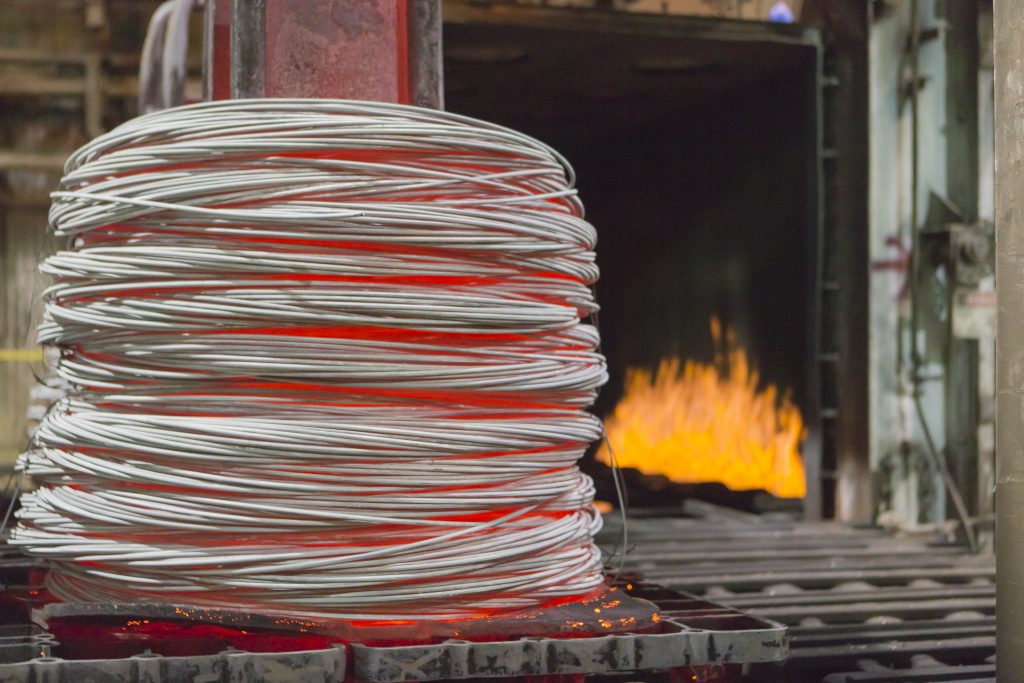Drawn Wire

Wire rod, manufactured in our wire rod mill using billets from our steelworks, will have a new look once processed in one of our wire mills. Through a cold drawing process, we reduce the wire size. It is then ready to receive a value-added element such as galvanizing, winding, oil tempering or annealing. The drawn wire can then be used for telecommunications, residential construction and automotive markets.
- Galvanized products are used for unique functions such as center span cable, designed and manufactured to protect submerged optical fiber in oceans around the world.
- Oil tempered products can be turned into garage door springs for residential or commercial purposes. A more sophisticated chrome-silicon product is manufactured in a variety of sizes, cut to specific lengths and used as a lifting device in major manufacturers’ vans.
- Annealing is a heat treatment process for “cold-heading” quality products which are then converted into an assembly element: nuts, bolts, screws and connecting rods frequently used in the automotive industry. For example, our drawn wire can be turned into dashboard mounting screws, motor mounting bolts, or oil pan drain plugs.
Being probably the most competitive segment of the steel industry, drawn wire requires special expertise. Our team is determined to face the many challenges of the market. We are constantly adapting to the required changes in categories, sizes and packaging, and are recognized for our outstanding quality and excellent service.
Cold Heading Quality Wire/ Processed Rod
CHQ wire or processed rod is the finished product used primarily by manufacturers of fasteners such as bolts, screws, nuts, rivets and specialty forms mainly in the automotive and construction sectors. The product is delivered in various categories which include spheroidize annealed at finish size (SAFS), spheroidize annealed in process (SAIP), spheroidize annealed rod (SAR) as well as others. The product can be coated with several different recipes including phosphate/ lube or phosphate/ polymer.
A number of grades, supplied to ASTM F 2282, can be requested by manufacturers to meet the final fastener hardness or ductility. These include plain carbon (1005-1045), high manganese (1335/1541), boron (10B21/30/35) and alloy grades (4037, 4135).
Please inquire for items not listed.
Galvanized Wire
Galvanized wire is used when corrosion protection is required by the customer. The steel wire is passed through a molten zinc bath and wiped to produce regular coating (pad wiped) or a heavy hot dip galvanized coating according to Class A/Class 3 requirements of various ASTM standards. ArcelorMittal Long Product Canada produces galvanized low carbon and high carbon wire and 7-wire strand.
Galvanized low carbon wires are often used for industrial applications including formed parts, welded fabric, etc. Galvanized high carbon wires are used when more demanding mechanical properties are required. It is used in a variety of different industries including pulp and paper and recycling, as well as many applications such as communication cables, electrical conductors, and structural cables. Galvanized 7-wire strand can be found in guy and overhead ground cables and electrical conductors.
*Customer Specification to meet final mechanical properties. Custom grades also available, please inquire.
Bright Wire
Bright wire is used when applications require a clean bright finish or a bright basic finish. The steel wire has lubrication applied to help in subsequent processing and to protect the steel from corrosion. ArcelorMittal Long Products Canada produces low carbon (C1008-C1018), high carbon (C1045-C1087) or to customer specific requirements for bright wire.
Typical applications for low carbon bright wire include welded fabric, baskets and displays. High carbon bright wire is more demanding and include various automotive applications such as springs, clips and other formed parts. Other end uses include screens, hose reinforcing wire and mattress coils. We can produce these products either as direct-drawn or patented in process.
*Customer Specification to meet final mechanical properties. Custom grades also available, please inquire.
Oil Tempered Wire
Oil tempered wire is a product used by manufacturers of springs, forms, screens and torque bars primarily in automotive, housing and various commercial sectors. The product is made to meet customers finished part requirements. The microstructure of the finished wire has excellent fatigue properties.
ArcelorMittal Long Products Canada has the capability of producing to the below ASTM specifications using one of three oil temper lines with high temperature austenitizing, mineral oil quenching, tempering and soluble oil coating. The finished product can be delivered in coil form or straight and cut lengths.
*Customer Specification to meet final mechanical properties.
Prestressed Concrete Strand
Low relaxation prestressed concrete strand is a 7-wire cable found primarily as reinforcement of concrete in bridge supports and in parking decks, platforms, light standards, etc.
The strand is made to an ASTM A416 specification which usually requires the use of high tensile, high carbon steel necessary to meet the desired finished mechanical properties. The strand undergoes an in-line, low temperature heat treatment to meet stress relaxation and ductility requirements.
The finished product is an industry standard 3.3 ton layer wound package which can be shipped on a wooden pallet.
Key Properties
Cold Heading Quality Wire/ Processed Rod
- Chemistry control
- Dimensional control
- Surface quality
- Cold ductility
- Microstructure homogeneity
- Decarb/recarb control
Galvanized Wire
- Chemistry control
- High ductility
- Mechanical properties
- Stress
- Zinc adherence
Bright Wire
- Chemistry control
- Surface finish
- Mechanical properties
- Lubrication
- Dimensional control
Oil Tempered Wire
- Chemistry control
- Wrap test
- Dimensional control
- Tensile
- Surface quality
Prestressed Concrete Strand
- Chemistry control
- Breaking strengh
- Young’s modulus
- Elongation
- Stress-relaxation





